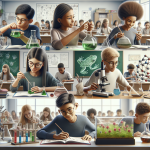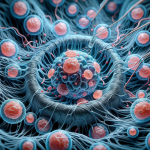
US Adults Prefer Cannabis Over Tobacco, Says Gallup
Cannabis Overtakes Tobacco: Increased Marijuana Usage Among US Adults
Recent findings from a Gallup poll indicate a transition in the smoking preferences of adults in America. The data shows that 15% of participants reported smoking marijuana, which is higher than the 11% who confessed using tobacco cigarettes in the previous week.
Gallup noted a 1% increase from the past two-year average, tagging it as “aligned with the growth trend seen in recent years.” The information collected ranged from 2023 to 2024, highlighting noticeable demographic differences.
Unpacking the Gallup Poll Data
The survey results show that men (17%) were more prone than women (11%) to smoke marijuana, with young adults in the age bracket of 18-34 years showing the highest inclination to use cannabis (19%). The age category of 35 to 54 was not far behind with an 18% inclination, while those aged 55 and above indicated a 10% inclination.
The survey also illuminated significant discrepancies in the use rates based on political party association. Among Democrats, 23% admitted to smoking marijuana, more than double the 10% rate among Republicans. Independents showed a 14% rate.
Geographically, the West reported the highest marijuana usage at 19%, marginally more than the East and Midwest (16% each), and significantly higher than the South (11%). This could reflect both cultural nuances and diverse legal environments surrounding marijuana.
The overall pattern of U.S. adults smoking marijuana has surpassed double the initial 2013 report. For statistical validity, Gallup displayed the findings in two-year averages and also explored alternate forms of cannabis usage such as via vape, edibles, and THC beverages.
When Gallup quizzed about past marijuana trials, 47% of U.S. adults confessed to having used the substance at least once.
Simultaneously, tobacco cigarette consumption has consistently diminished over recent years and has now fallen to a historic 80-year low, according to Gallup. The majority of e-cigarette users are found to be young adults in the 18-39 year-old bracket.
Interestingly, usage rates for both marijuana and tobacco are less than America’s alcohol consumption rate, which currently stands at 58%.
In Gallup’s most recent data, a robust 68% of respondents supported legalization of marijuana. The upsurge in routine cannabis use coincides with an increase in the number of states reversing marijuana prohibition, however, a direct causal relationship is yet to be determined.
The national rate of marijuana use seems to reflect policy alterations– a reduced usage during periods of increased restrictions and a surge in lenient times. Interestingly, usage rates among older adults are predicted to continue to rise as more states legalize marijuana. On the other side, the percentage of teens admitting to cannabis usage has reduced from 39.9% in 2011 to 27.8% in 2021.








